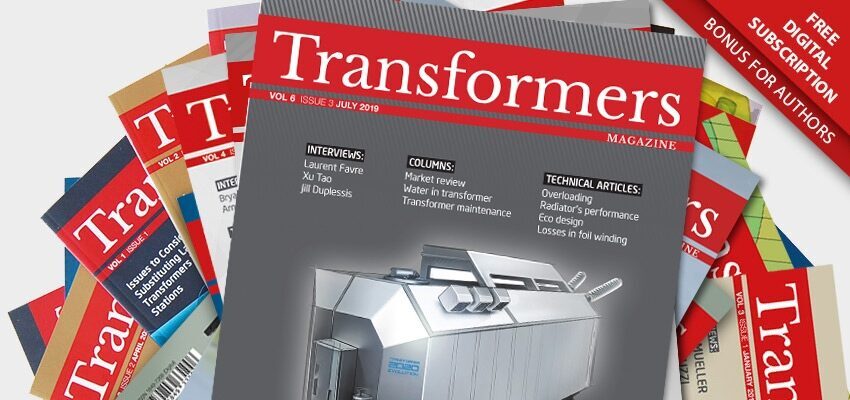
Editorial message
Half a year ago, in the editorial message of the magazine's Vol. 6, Issue 1, I mentioned a discussion on the Eco-Design Regulation, held at a conference, and how that discussion catalysed some unanswered questions about the Regulation, such as the effectiveness of the total cost of ownership (TCO) which was taken as a measure for transformer specifications in the Regulation. Two key reasons for introduction of the Regulation were the reduction of greenhouse gas (CO₂) and the reduction of energy consumption.
byMladen Banovic, Editor-in-Chief

Dear Readers,
Half a year ago, in the editorial message of the magazine’s Vol. 6, Issue 1, I mentioned a discussion on the Eco-Design Regulation, held at a conference, and how that discussion catalysed some unanswered questions about the Regulation, such as the effectiveness of the total cost of ownership (TCO) which was taken as a measure for transformer specifications in the Regulation. Two key reasons for introduction of the Regulation were the reduction of greenhouse gas (CO₂) and the reduction of energy consumption.
In the meantime, I was able to get some answers by communicating with my peers and participating in discussions on Eco-Design at different events. In this regard especially useful was a discussion on Eco-Design, held during the CWIEME Central Programme in Berlin, which I was moderating and where the keynote speaker was Michel Sacotte who was involved in the development of the EU Regulation from the very beginning, since 2007.
The key figure presented at the discussion is that about 90 % of the CO₂ emitted during the entire lifecycle of a transformer comes from the operational stage, which is due to the losses, while transformer production and decommissioning/recycling each contributes with a few % of totally emitted CO₂. Best result in reducing CO₂ emission can be achieved by reducing its major contributor, the emission from operational stage, caused by losses.
So, the TCO has turned out to be an effective tool between contradictory requests of users and the European Commission. Namely, without significant improvement of raw materials performance, the reduction of CO₂, requested by the European Commission, is possible by increasing the size of transformers, while users need to minimize the increase of transformer size, due to financial and many other practical reasons.
The fact that 90 % of emitted CO₂ comes from the operation stage of transformer’s lifecycle confirms that manufacturing bigger transformers, as requested by the Regulation, will not increase CO₂ emission to that extent which would annul or significantly reduce savings in CO₂ emission due to lower losses.
It is useful to point out that, for installations in existing substations, constraints related to weight and dimensions can be a ground for regulatory relief. Also, for large power transformers the regulatory exemption is possible in case of disproportionate cost.
In this issue, we bring you three eminent interviews – an interview with the Managing Director of ABB Transformers, talking about one of the hottest topics this year – the joint venture of ABB and Hitachi and the future of transformers technology; an interview with the CEO of a large Chinese transformer manufacturer talking about their 60 years of development from a spare parts manufacturer to a global company for turn key solutions; and an interview with a manager from a global testing company giving an interesting overview of transformer testing.
Our regular columns bring fresh commentary on the latest market trends and topics related to water in transformers and transformer maintenance. A selection of technical articles and advertorials present a range of topics including transformer insulation components, transformer oil, aging of transformers, robots for internal inspection of transformers, digital solutions for transformers and asset management, aspects of transformer overloading, performance of radiators, eco-design, loss models, etc.
If you have a commentary on any of the topics and issues covered in the magazine please contact us at any time. If you wish to express intent to present your research or point of view on any other topic of interest involving our industry, our team would be glad to hear from you. For any questions or inquires on how to publish your work with us, contact us at info@merit-media.com.
Last but not least, I would like to thank all of you for your overwhelming support and understanding during the last few months, especially for the information you have been providing to us. I’m glad that we share the commitment to the right conduct, without any compromise, and I’m looking forward to continuing together in the same direction. Feel free to contact me on this anytime.
I wish you a joyful reading of this, the biggest yet, regular edition so far.
Mladen Banovic, Editor-in-Chief







